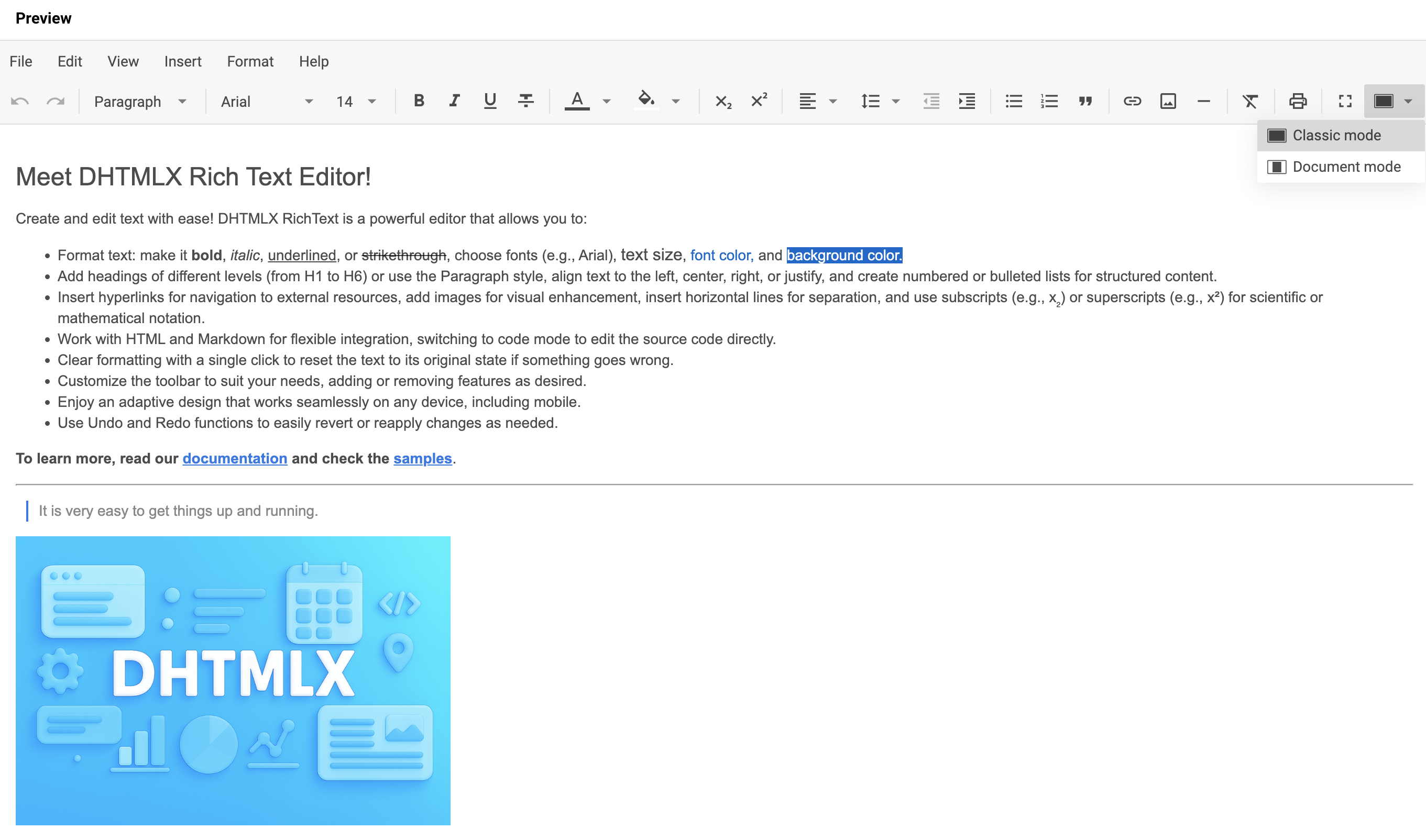How to start
This clear and comprehensive tutorial will guide your through the steps you need to take in order to get a fully functional RichText on a page.

Step 1. Including source files
Start from creating an HTML file and call it index.html. Then proceed to include RichText source files into the created file.
There are two necessary files:
- the JS file of RichText
- the CSS file of RichText
<!DOCTYPE html>
<html>
<head>
<title>How to Start with RichText</title>
<script src="./codebase/richtext.js"></script>
<link href="./codebase/richtext.css" rel="stylesheet">
</head>
<body>
<script>
// your code will be here
</script>
</body>
</html>
Installing RichText via npm or yarn
You can import JavaScript RichText into your project using yarn or npm package manager.
Installing trial RichText via npm or yarn
If you want to use trial version of RichText, download the trial RichText package and follow steps mentioned in the README file. Note that trial RichText is available 30 days only.
Installing PRO RichText via npm or yarn
You can access the DHTMLX private npm directly in the Client's Area by generating your login and password for npm. A detailed installation guide is also available there. Please note that access to the private npm is available only while your proprietary RichText license is active.
Step 2. Creating RichText
Now you are ready to add RichText to the page. First, let's create the <div> container for RichText. So, take the following steps:
- specify a DIV container in the index.html file
- initialize RichText using the
richtext.Richtextconstructor
As parameters, the constructor takes any valid CSS selector of HTML container where the RichText will be placed into, as well as corresponding configuration objects.
<!DOCTYPE html>
<html>
<head>
<title>How to Start with RichText</title>
<script src="./codebase/richtext.js"></script>
<link href="./codebase/richtext.css" rel="stylesheet">
</head>
<body>
<div id="root"></div>
<script>
const editor = new richtext.Richtext("#root", {
// configuration properties
});
</script>
</body>
</html>
Step 3. Configuring RichText
Next you can specify configuration properties you want the RichText component to have when initialized.
To start working with RichText, first you need to provide the initial data for editor via the value property. Beside this, you can enable menubar, customize toolbar, specify fullscreen and layout modes, apply new locale as well as default styles.
const editor = new richtext.Richtext("#root", {
menubar: true,
toolbar: false,
fullscreenMode: true,
layoutMode: "document",
locale: richtext.locales.cn
defaultStyles: {
h4: {
"font-family": "Roboto"
},
// other settings
}
});
What's next
That's all. Just three simple steps and you have a handy tool for editing content. Now you can start working with your content or keep exploring the inner world of JavaScript RichText.